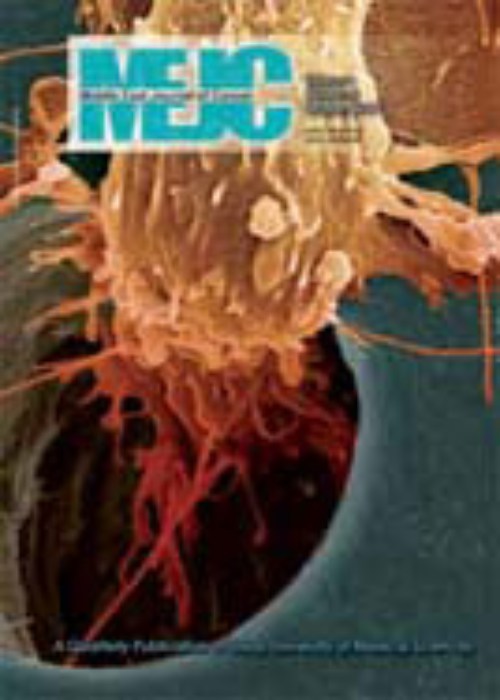Prognostic Value of KI6 Biomarker to Predict Short Term Prognosis of Low Grade Cervical Intraepithelial Neoplasia in Human Papilloma Virus Negative and Positive Patients
Author(s):
Article Type:
Research/Original Article (دارای رتبه معتبر)
Abstract:
Background
Cervical cancer is the most common gynecologic cancer in developing countries. Although this malignancy is preventable, problems exist with screening this cancer. Numerous studies have researched immunohistochemistry methods, such as the KI-67 biomarker as a proliferation marker, to improve screening for cervical intraepithelial neoplasia as the precancerous phase of cervical cancer. These studies mostly screened cytological samples. In the current study, we sought to analyze the correlation between the KI-67 proliferative biomarker and HPV infection in order to predict short-time prognosis in cervical intraepithelial neoplasia as an alternative or ancillary method to current screening methods. Our assessment was based on histologic samples from a different geographic population.
Methods
This descriptive cohort prospective study included 40 patients diagnosed with low grade cervical intraepithelial neoplasia based on cervical punch biopsy samples after colposcopy examination. We enrolled patients who referred to the Department of Gynecology- Oncology of an academic hospital of Mashhad University of Medical Sciences from 2016 to 2017. All low grade cervical intraepithelial neoplasia samples were investigated for HR-HPV DNA with the Cobas test and immunostaining for the KI-67 biomarker. After a one-year follow-up, we evaluated the prognosis for all patients based on liquid based cytology and HRHPV test. Data were analyzed by SPSS version 23.0 and the Mann-Whitney U and Fisher's exact tests. A P-value < 0.05 was considered significant.
Results
We observed a significant difference between HR-HPV positive and negative tests in KI-67 expression (P<0.001), but there were no significant differences in reactivity level of cervical epithelium (P=0.5) and in KI-67 expressions in metaplastic and non-metaplastic epithelium (P=0.88). After one year, most low grade cervical intraepithelial neoplasia cases in group A that had a low staining KI-67 biomarker had evidence of regression. On the contrary, all cases with high grade KI-67 expression didn’t persist or progressed necessarily.
Conclusion
The KI-67 biomarker is recommended as a complementary screening test, but not an alternative for triage of high-risk patients with low grade cervical intraepithelial neoplasia. Patients with low grade cervical intraepithelial neoplasia/HR-HPV positive cervical samples and low staining KI-67 antigen could be offered a less aggressive follow-up protocol.Keywords:
Language:
English
Published:
Middle East Journal of Cancer, Volume:10 Issue: 1, Jan 2019
Pages:
23 to 29
magiran.com/p1927661
دانلود و مطالعه متن این مقاله با یکی از روشهای زیر امکان پذیر است:
اشتراک شخصی
با عضویت و پرداخت آنلاین حق اشتراک یکساله به مبلغ 1,390,000ريال میتوانید 70 عنوان مطلب دانلود کنید!
اشتراک سازمانی
به کتابخانه دانشگاه یا محل کار خود پیشنهاد کنید تا اشتراک سازمانی این پایگاه را برای دسترسی نامحدود همه کاربران به متن مطالب تهیه نمایند!
توجه!
- حق عضویت دریافتی صرف حمایت از نشریات عضو و نگهداری، تکمیل و توسعه مگیران میشود.
- پرداخت حق اشتراک و دانلود مقالات اجازه بازنشر آن در سایر رسانههای چاپی و دیجیتال را به کاربر نمیدهد.
دسترسی سراسری کاربران دانشگاه پیام نور!
اعضای هیئت علمی و دانشجویان دانشگاه پیام نور در سراسر کشور، در صورت ثبت نام با ایمیل دانشگاهی، تا پایان فروردین ماه 1403 به مقالات سایت دسترسی خواهند داشت!
In order to view content subscription is required
Personal subscription
Subscribe magiran.com for 70 € euros via PayPal and download 70 articles during a year.
Organization subscription
Please contact us to subscribe your university or library for unlimited access!


